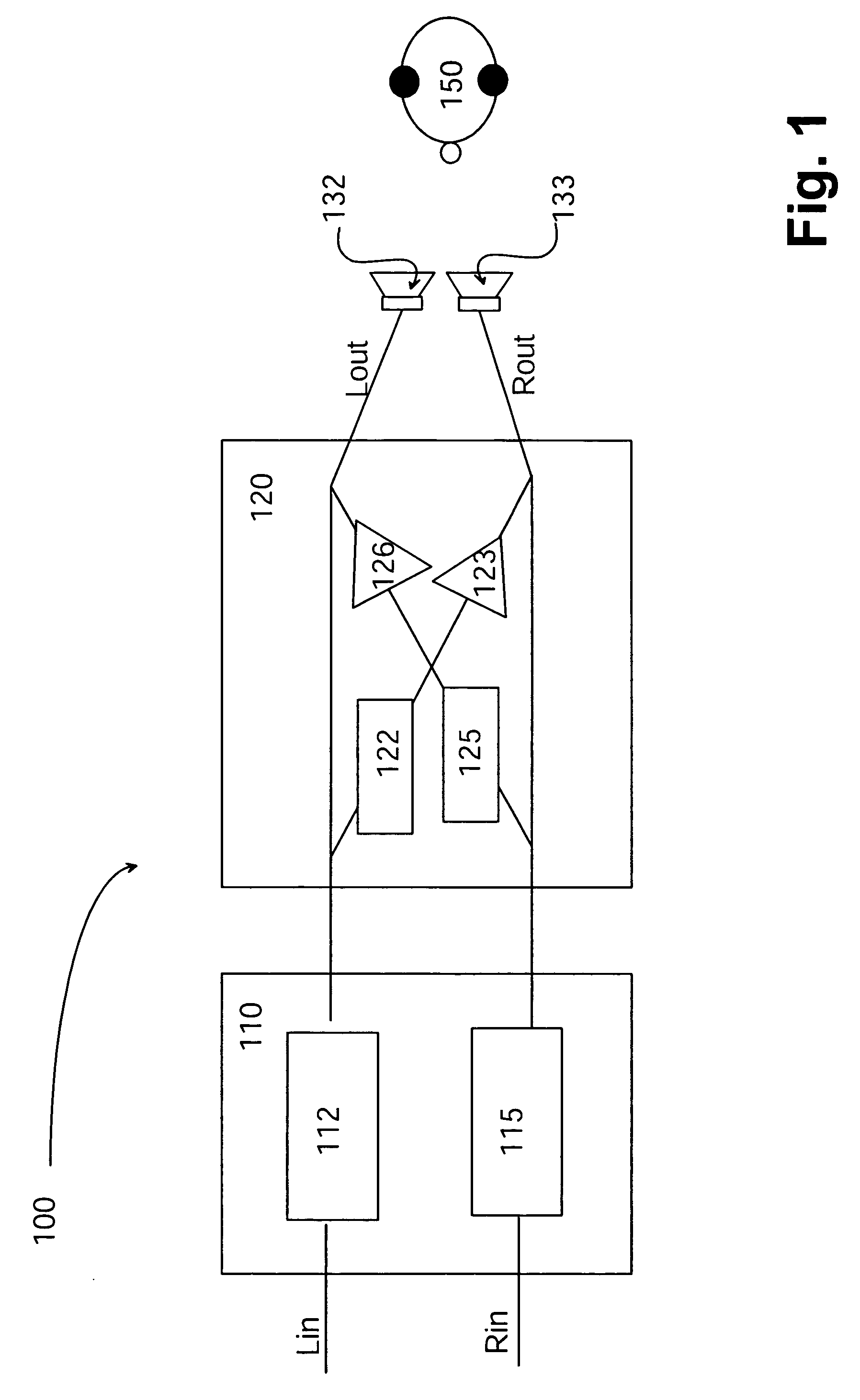Stereo widening network for two loudspeakers
a stereo widening network and loudspeaker technology, applied in the field of audio processing, can solve the problems of insufficient spatial effect, insufficient area between them, and small performance reduction, and achieve the effect of computationally extremely efficient and advantageous sound quality
- Summary
- Abstract
- Description
- Claims
- Application Information
AI Technical Summary
Benefits of technology
Problems solved by technology
Method used
Image
Examples
Embodiment Construction
[0027] Although specific terms are used in the following description for the sake of clarity, these terms are intended to refer only to the particular structure of the subject-matter selected for illustration in the drawings and are not intended to define or limit the scope of the invention.
[0028]FIG. 1 illustrates a possible configuration of a stereo widening network 100. In this example the network comprises left (Lin) and right (Rin) inputs and corresponding outputs (Lout, Rout). Two audio channels are taken in and processed in the network 100. The two main parts of the stereo widening network 100 are an equalizer 110 and a cross-talk network 120. The function of the equalizer 110 is to filter each of the audio channels (Lin, Rin), e.g. by two IIR comb filters (Infinite Impulse Response) 112, 115. The function may be similar for each of the channels (Lin, Rin): EQ(z)=11-gz-N,
[0029] The function of the cross-talk network 120 is to mix the direct channel (from the equalizer) wit...
PUM
 Login to View More
Login to View More Abstract
Description
Claims
Application Information
 Login to View More
Login to View More - R&D
- Intellectual Property
- Life Sciences
- Materials
- Tech Scout
- Unparalleled Data Quality
- Higher Quality Content
- 60% Fewer Hallucinations
Browse by: Latest US Patents, China's latest patents, Technical Efficacy Thesaurus, Application Domain, Technology Topic, Popular Technical Reports.
© 2025 PatSnap. All rights reserved.Legal|Privacy policy|Modern Slavery Act Transparency Statement|Sitemap|About US| Contact US: help@patsnap.com



